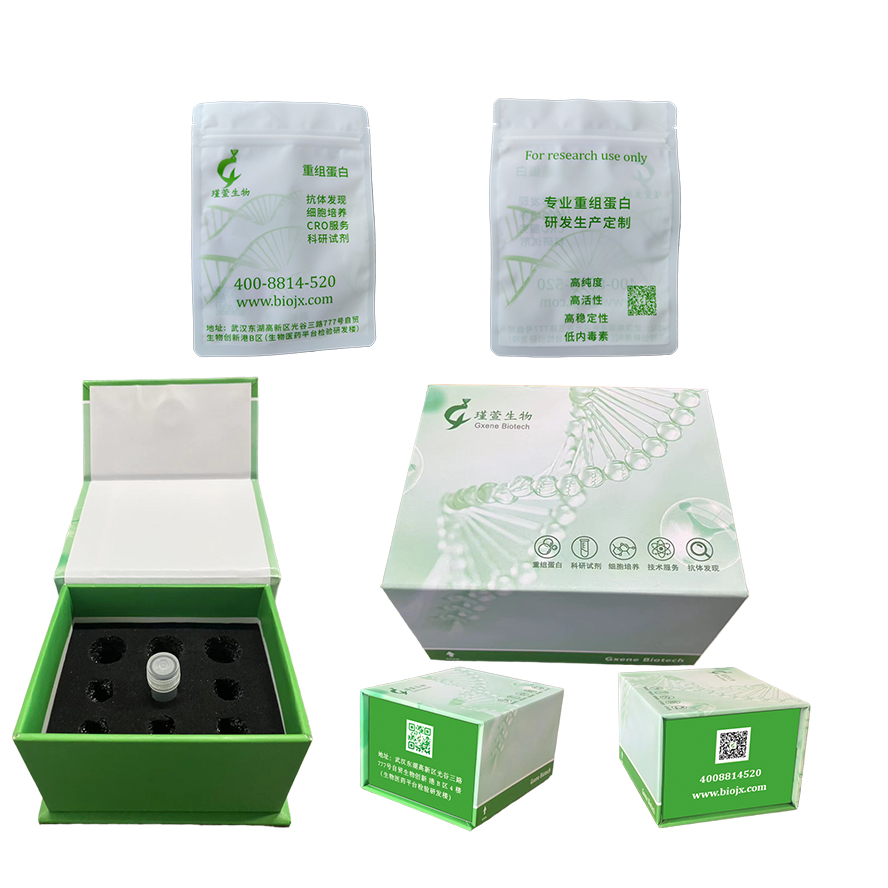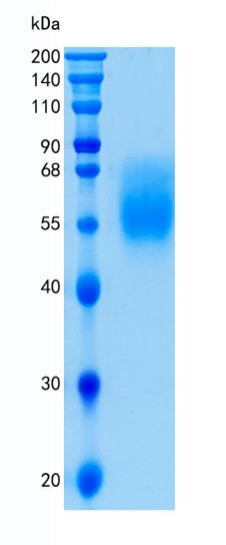



研究方向
Siglec-6 蛋白是一种推定的粘附分子,通过介导唾液酸依赖性与细胞的结合(特别是与 α-2,6 连接的唾液酸结合)发挥作用。值得注意的是,Siglec-6 的唾液酸识别位点可能被同一细胞表面上唾液酸的顺式相互作用所掩盖,这表明其结合特性的动态调节。除了其粘附作用外,Siglec-6 还与 LEP 相互作用,这意味着它参与细胞相互作用和信号传导过程。Siglec-6 的多方面性质强调了其作为唾液酸介导的细胞粘附和通讯途径的关键参与者的潜力。
Measured by its ability to bind biotinylated Neu5Ac alpha 2- 6GalNAc alpha (sialyl-Tn).
Siglecs (sialic acid binding Ig-like lectins) are I-type (Ig-type) lectins belonging to the Ig superfamily. They are characterized by an N-terminal Ig-like V-type domain which mediates sialic acid binding , followed by varying numbers of Ig-like C2-type domains. Eleven human Siglecs have been cloned and characterized . They are sialoadhesin/CD169/Siglec-1, CD22/Siglec-2, CD33/Siglec-3, Myelin-Associated Glycoprotein (MAG/Siglec-4a) and the Siglec-5 to 11. To date, no Siglec has been shown to recognized any cell surface ligand other than sialic acids, suggesting that interactions with glycans containing this carbohydrate are important in mediating the biological functions of Siglecs. Siglec-5 to 11 share a high degree of sequence similarity with CD33/Siglec-3 both in their extracellular and intracellular regions. They are collectively referred to as CD33-related Siglecs. One remarkable feature of the CD33-related Siglecs is their differential expression pattern within the hematopoietic system. This fact, together with the presence of two conserved immunoreceptor tyrosine-based inhibition motifs (ITIMs) in their cytoplasma tails, suggests that CD33-related Siglecs are involved in the regulation of cellular activation within the immune system. Human Siglec-5 cDNA encodes a 551 amino acid (aa) polypeptide with a hydrophobic signal peptide, an N-terminal Ig-like V-type domain, three Ig-like C2-type domains, a transmembrane region and a cytoplasma tail . Siglec-5 exists as a disulfide-linked homodimer on the cell surface and is expressed on monocytes, neutrophils and B cells . It binds equally well to both alpha 2,3- and alpha 2,6-linked sialic acid .